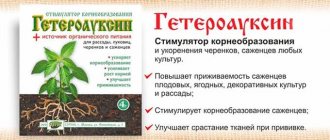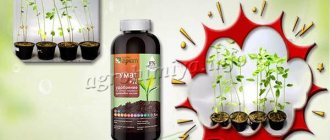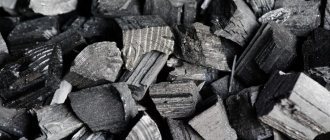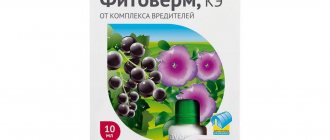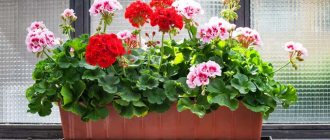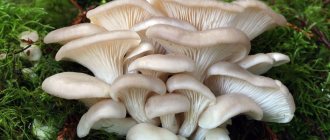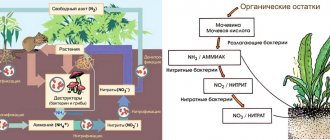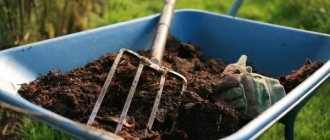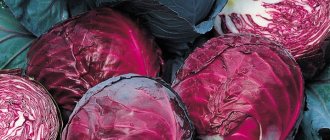I gave up tall varieties in the greenhouse a long time ago. Forming 5 ovaries after 5-6 leaves, they arrange thickets under the roof of the greenhouse. I have to cut out and carry out armfuls of green plants. The result is empty troubles instead of a good harvest. I buy determinate varieties with a height of 80-100 cm. They produce ovaries after 1-2 leaves. I form bushes into 2 stems. Having reached their height, they throw out powerful stepsons, which immediately produce flowers. Usually the bushes grow up to 180 cm. I remove excess shoots after 3-4 days, and remove the lower leaves down to the first cluster so that air can circulate under the bushes. I get 10 brushes from 1 bush. There are more. I don’t buy hybrids - the seed market is unreliable. I’m testing new varieties in the garden. I take seeds from the bushes I like and sow them in the greenhouse. At the end of February I soak them, germinate them, and on March 1st I plant them in boxes and place them on the windowsill. I try to water it with snow water and 2-3 times with Atlet growth regulator. It stops the growth of seedlings for a week after watering and promotes the development of the root system. My monthly seedlings are short and strong. Once released in a greenhouse, it develops quickly. To prevent it from stretching out, for the first 10 days I only moisten the soil around the bushes and don’t indulge in watering. My greenhouse is wooden, the sides are glazed, the roof is polycarbonate, the foundation is cast concrete. In March, I cover the outside of the greenhouse with Svetlitsa film, which has been used for many years. I'm taking it off before May 1st. At the end of March, I installed a barrel with warm water inside, and at night the miracle stove runs on diesel fuel and does not smoke. By April 1, the greenhouse is warmed up and ready for sowing. I will spend it in early April. When the first ovary appears, I spray the bushes with boric acid (5 g per bucket of water). Having collected the first 10 buckets of tomatoes, I spray the plants with boric acid a second time. Boric acid ensures friendly flowering. We eat our first tomatoes after June 10th. When it’s hot, I mulch the beds with hazel leaves, press them on top with chopped nettles, and add nettles twice more over the summer. By autumn the mulch is practically rotten. At the end of July and August I feed the tomatoes with ash. Throughout the summer, once every 7-8 days I spray the tomatoes with microbes (invention of Anatoly Petrovich Bessarab from Kharkov). Ingredients: add 1 tbsp to 1 liter of whey. a spoonful of sour cream, then 1 liter of warm water (well water) and 1 tbsp. a spoonful of honey. I mix everything, add 10 g of yeast, bring the composition to 10 liters with warm water. This cannot be done in metal containers. I pour it into a plastic food canister. I close it tightly and store it in a dark, warm place. When the composition is ready, when the cork is opened, a pop is heard - this is a sign: the microbes are ready for battle. Only 1 tbsp. spoon of microbes into a bucket of water and the spray composition is ready. There are no dried buds on the tomatoes, the greens are juicy. V. P. Gladkikh, p. Krasnoe, Lipetsk region.
Vegetable growing technology according to John Jevons
Let me offer you a new high-yield technology for growing vegetables in summer cottages. It is based on the discoveries of scientists: aerobic and anaerobic microbes, the biointensive method of the American farmer John Jevons
, described in the book “How to Grow More Vegetables Than You Can Imagine, and in a Lot Less than You Think,” the work of Japanese and Russian scientists on growing cucumbers using microbes and, of course, personal observations and conclusions. I will only give conclusions, omitting the whole process of how I arrived at them.
I was surprised and amazed by the yield figures obtained by scientists who reproduced the biointensive technology of D. Jevons.
Judge for yourself. The first number is the average, the second is the maximum.
Potatoes - 450-3540 kg per hundred square meters, watermelon - 450-1450 kg, barley - 45-110 kg, zucchini - 440-370 kg, late cabbage - 870-1740 kg, onions - 910-2450 kg. carrots - 680-4900 kg, cucumber -540-2170 kg, tomato - 880-1900 kg, beets - 500-1200 kg, fodder beets - 1810-4300 kg, garlic - 550-1100 kg.
The plants were planted at the same time as recommended by domestic agronomy, either with seeds or seedlings.
As for the planting scheme, in order to better use the area, the plants were placed in a checkerboard pattern so that the distances from stem to stem or from center to center of the hole were the same. For common vegetable crops they are: eggplant - 45 cm, beans - 20 cm, watermelon, pumpkin, tomato - 46 cm, cabbage, zucchini, melon, sweet corn - 38 cm, peas - 7.5 cm, beans - 15 cm, carrots - 8 cm, parsley - 13 cm, onions, garlic, beet -10 cm, potatoes - 23 cm, radish - 5 cm, cucumber, sweet pepper - 30 cm.
The Japanese in Buryatia, and then in Barvikha near Moscow, received a cucumber harvest 1.7 times greater than in the Russian control area. Moreover, the consumption of microorganisms was from 1 tsp. up to 1 tbsp. l. for 10 liters of water.
My eyes lit up: how will other vegetables behave?
What kind of microbes are these?
And I found the answer to this in the article “Microbes against Diseases.”
It turns out that this is a regular mullein solution (1/3 of a bucket of mullein, the rest is water). After everything has fermented, which is 5-7 days (it all depends on the ambient temperature), whey, buttermilk, skim milk - dairy waste, rotted hay (2/3 bucket + water) are added.
These microbes destroy powdery mildew, anthracnose, late blight, various rots, etc.
The entire area is divided into beds and paths. The width of the beds is up to 1.2 m, the length is arbitrary, the width of the paths is 0.3-0.5 m. We walk only along the paths, we do not step on the beds at any time of the year. Everything is planted across the beds.
In D. Jevons’ technology, soil preparation consists of double digging using humus or compost with a layer of 5-7 cm, i.e. poured a 5-7 cm layer of humus onto the bed, dug up with a bayonet, took out the dug up soil, poured 5-7 cm again cm of humus, they dug up again what they had dug up before, and returned it back to the garden bed.
Composition of drugs
Concentrates contain various microorganisms. For example, the drug “EM-1 Baikal” includes 60 strains. All proportions are calculated so that the bacteria do not interfere with or destroy each other, but form a stable symbiosis. The main groups of microorganisms that are used in EM preparations:
- Actinomycetes – synthesize antibiotics and improve soil condition.
- Yeast is necessary for the production of antibiotics that suppress harmful microorganisms, and biologically active substances that stimulate the growth and development of plants. Yeast also synthesizes substrates necessary for the life of lactic acid bacteria.
- Lactic acid bacteria. It is well known to the average person thanks to advertising of yoghurts and other similar products. Bacteria of this type produce lactic acid, which suppresses the growth and development of harmful bacteria, and also accelerates the decomposition of organic matter.
- Fermenting fungi decompose organic residues and convert them into accessible, easily digestible substances for plants.
- Photosynthetic bacteria. This type of microorganism is capable of completely self-sufficiency. They create nutrients from plant materials and gases. Bacteria synthesize natural sugars, amino and nucleic acids, which are necessary food for planting. Also, thanks to the enrichment of the soil with useful substances, other microorganisms also receive sufficient nutrition.
EM preparations are something that any summer resident will need.
Recipe No. 2. The cheapest
It is better to take soil for fermentation in the area where green manure grew last year
If you do not have the opportunity to get any of the ingredients from the previous version of preparing the EM drug, I advise you to pay attention to the following recipe. Ingredients:
Ingredients:
- freshly cut grass, weeded weeds without seeds and other succulent organic matter;
- a liter of sour milk, old kefir or water formed after washing sour cream cups;
- a couple of handfuls of hay dust (bacillus hay perfectly destroys harmful bacteria that may inadvertently settle in your preparation);
- half a jar of old unnecessary jam (but not fermented!);
- half a liter of fertile soil from the site;
- water;
- You can also add a little humic fertilizer, as well as wood or grass ash.
Cooking method:
- Lightly chop the grass, fill the barrel to the top (not reaching the edge 5-10 centimeters).
- Fill the greens with water so that it completely covers them.
- Add the remaining ingredients to the mixture and mix well.
- Allow the biofertilizer to brew, covered, for 7-10 days. The container must be opened periodically (once a day) and its contents stirred with a long stick.
How to use:
Just like in the previous recipe, only this time you can take not 20, but 10 parts of pure water for one part of the EO preparation.
Do you have any doubts? Try it!
I plant and grow cucumbers in a greenhouse measuring 4x2.5 m and 2.2 m high with regular seedlings, with 6 sprouts in one row on each side. Last year, the cucumber harvest began at the end of June, but the neighbors had their first cucumbers only a month later. They were all waiting, and I treated them to excellent cucumbers! We ate it ourselves with the whole family (five people), pickled two dozen 3-liter jars of wonderful greens (photo 3-4). Our beauties bore fruit throughout September. Tomatoes were also pleased with a good harvest, although late blight was a little active in August, and there were minor losses.
And the roses bloomed from July to October, and two bushes grew 1.5 m high (not climbing) and were completely strewn with buds and flowers - extraordinary beauty! Such flowering has never been observed in previous years: this is the work of our tireless helpers - aerobic microbes.
How to get a super harvest?
To achieve good results, you do not need to radically change the system of work in the garden. You just need to follow the advice from Jevons' book.
Plant plants at the times recommended for your area
It does not matter whether seeds are sown or seedlings are planted. Arrange the plants in a checkerboard pattern - then the distance from stem to stem and from hole to hole will be the same. The holes are dug at the distance indicated in the table.
| Name of culture | Distance between adjacent holes (cm) |
| Watermelon, pumpkin, tomato | |
| Eggplant | |
| Zucchini, cabbage, corn | |
| Cucumber, sweet pepper | |
| Potato | |
| Beans | |
| Beans | |
| Onions, garlic, beets | |
| Radish |
To combat powdery mildew, late blight, anthracnose and rot, use a special solution of mullein. The bucket is filled 1/3 with mullein and 2/3 with plain water. The composition ferments for 5-7 days. After this, dairy waste is added to it - buttermilk, skim milk and whey, rotted hay in 2/3 buckets and 1/3 water. After this, humus is applied to the beds.
Divide the area into beds and walking paths. The width of the beds should be 1.2 m, and the paths should be no more than 0.5 m. Plant seedlings and sow seeds across the beds. After this you cannot enter them. Pour a layer of humus 5-7 cm thick onto the bed, then dig it up with the bayonet of a shovel and remove the dug up soil. Then repeat the procedure, i.e. add humus again, dig it up and then cover it with the layer removed the first time.
In experimental plots in Japan and near Moscow, a cucumber yield was obtained that was 1.7 times higher than the average. The consumption of microorganisms was no more than 1 tbsp. for 10 liters of water
Anatoly Petrovich Bessarab microbial composition
› Interesting
Well, it’s very convenient to blame the weather for all failures. Especially in your own mistakes. Only the weather somehow doesn’t care much, and the same summer residents repeat the same mistakes from year to year. And no Bessarab with its ingenious recipes is a decree for them: the main thing is that without innovations.
Even without a harvest, as long as it’s the old way...
“Layer pie” for a novice summer resident
A few words about the weather. Some people (and there are quite a few of them, my wife is a prime example) are always dissatisfied with it: they are either cold or hot, or the light is too bright. I respect any weather and enjoy every new day.
Now about matters at the dacha.
Everything you need for this article is here >>>
I’ll say right away that I haven’t dug the ground for 15 years. At first we loosened the beds with a hoe, and since I purchased a manual cultivator (seven years ago), we have been cultivating the land only with it: it turns out both quickly and relatively easily, especially for men. To renew and improve the soil, I annually add compost, mulch, and recently started using green manure (most often white mustard).
I have been using fluff liming for a long time. Nowadays we rarely have to deal with virgin soil, however, in the fall of the year before last I prepared a plot of 5x5 m in size as follows.
I mowed the grass on it and covered the entire area with cardboard from old large boxes, and wet it with a watering can or hose. A layer of mowed grass (maybe hay or straw) 15-20 cm thick was poured on top, followed by a layer of compost of the same thickness.
You can repeat these layers, alternating, and you will get a “layer cake.”
This method is especially useful for summer residents who have purchased a new, untreated or overgrown plot.
Not immediately, of course, but gradually it can be put in order. But where to get compost? Now in the literature, many methods are proposed for preparing compost from mowed grass (especially fine grass) in two to three months.
In the plot I prepared in the fall, I planted six zucchini and one pumpkin (photo 1).
Although this place is in partial shade, I got an excellent harvest of zucchini last year, regardless of the weather: it rained every day in May, June and half of July.
Let me make a reservation right away: last season I used the “ magic” composition of Anatoly Petrovich Bessarab
(See his articles.), for which I express my deep gratitude to him. I also used this composition when growing seedlings (tomato, cucumber, squash, sunflowers).
During the season I used it to treat all plants grown by seedlings, potatoes, winter garlic, onions, carrots, all kinds of greens (lettuce, parsley, chives, onions), as well as strawberries, strawberries and flowers (50 rose bushes, daisies, gladioli, marigolds and etc.). The strawberry and wild strawberry bushes grew tall, as if they had been tied up or had powerful supports installed, and the yield was excellent and longer than ever (photo 2).
Do you have any doubts? Try it!
I plant and grow cucumbers in a greenhouse measuring 4x2.5 m and 2.2 m high with regular seedlings, with 6 sprouts in one row on each side. Last year, the cucumber harvest began at the end of June, but the neighbors had their first cucumbers only a month later.
They were all waiting, and I treated them to excellent cucumbers! We ate it ourselves with the whole family (five people), pickled two dozen 3-liter jars of wonderful greens (photo 3-4). Our beauties bore fruit throughout September.
Tomatoes were also pleased with a good harvest, although late blight was a little active in August, and there were minor losses.
And the roses bloomed from July to October, and two bushes grew 1.5 m high (not climbing) and were completely strewn with buds and flowers - extraordinary beauty! Such flowering has never been observed in previous years: this is the work of our tireless helpers - aerobic microbes.
Dear summer residents! I don’t want to impose my opinion on you, but personal practice and its results are the best measure, so I advise all doubters to try the “magic” solution on one crop and compare your previous technology with that proposed by Anatoly Bessarab.
You will see and understand everything yourself.
© Valery Ivanovich KORABLEV. Moscow
How to prepare “Bessarab solution” with your own hands and reviews of its use
Amazing life-giving solutions for feeding plants do not leave any of the readers indifferent. And here is another report on their use. We read and remember how to do it and, most importantly, how not to do it.
It all started with the famous article by A.P. Bessaraba Microbes work, people rest . I checked many of his recommendations already in the same season. Moreover, when preparing life-giving solutions, he paid special attention to the “assortment” of microbes contained in them.
And very soon I became convinced that they really revive plants, even if they were already affected by late blight.
What struck me most in this sense was the result of the experiment on potatoes: I treated the affected tops with a microbial spray, and when I arrived at the dacha a week later, I found the once sick and hopeless bushes already in much better condition. After that, I sprayed all the plantings with microbes and was again surprised by the results.
For example, the vines of cucumbers that had begun to turn yellow began to come to life, and bright greenery and new flowers appeared on them.
Change of consciousness
In general, I took the article “Microbes work, people rest” as the basis for all my farming. After all, it presents a new high-yielding technology, which is based on the latest world achievements in agricultural technology.
First of all, I used the recommended staggered planting pattern so that the distances between plants were always the same throughout.
For example, I planted cabbage in increments of 45-50 cm (46 cm was recommended), and, surprisingly, it grew in a way that I had never seen before: the leaves occupied the entire surface of the beds so that there was nowhere to step (which means the ground was protected from the sun and retained moisture well), and the heads of cabbage were filled literally before our eyes.
In many letters from summer residents, phrases like “I water the plantings with nettle infusion in a ratio of 1:10” or “I spray with ammonia solution” are often found.
And such recommendations have become considered almost standard.
Why exactly? You never know who waters and how! Some, for example, use microbial solutions together with superphosphate and copper sulfate, killing all living things. Should we take an example from them too?
I myself used to periodically spontaneously use microbial solutions (though at that time I didn’t even realize that I was dealing with microbes), but now, after carefully studying Bessarab’s experience, I approach working with them intelligently.
After all, let’s say, I almost never did foliar feeding before: it’s hard to force myself to grow mullein along with nettles, infuse this “brine” and water the plantings with it on the foliage (for example, cucumbers, tomatoes and strawberries that have begun to bear fruit), although you know that in a week there will be nothing left of him. But the microbes obtained according to A.P.’s recipe Bessaraba is a completely different matter: the work is clean, and there is a “long-lasting” effect.
Let me remind you that the author suggested dissolving 1 tsp in 1 liter of serum for growing microbes. sour cream, and in 1 liter of spring water or taken from a pond (but not from the water supply!) Dissolve 1 tbsp. l. honey After merging these solutions, the volume is brought to 10 liters and infused for several days, like the same widely used herbs and mullein.
Considering that such solutions cannot be stored in metal containers, I now dilute them in ordinary 6-liter plastic bottles.
Since the sun's rays are also harmful to them, I keep the container with them in a warm, dark place (in a summer shower), and cover a large barrel with an infusion of herbs, where I also add microbes, with a thick rubber mat.
Now about consumption: when watering plants, I add 50-100 g of microbial solution to each watering can.
Useless milk
I admit, at first not all of A.P.’s recommendations were I used Bessaraba in the garden . For example, I did not carry out abundant watering to a depth of 15-20 cm, which should not only saturate the top layer of soil with water, but also cause a surge of moisture from the depths of the beds.
It seemed too complicated to me then, since I could not come up with a system for providing such irrigation. I did this later (in 2016-2017), digging plastic tubes with a diameter of 80 mm and a length of 30-40 cm between the plants to a depth of 20-25 cm and mulching the beds with tops, newspapers and cardboard. The result is beyond all praise (photo 1).
But, having achieved success and believing in myself, I made the most serious mistakes, paying for my high self-esteem.
For example, in 2021 I couldn’t get real, natural whey, and I decided to use homemade whey instead, made from milk bought in a chain store and packaged in a “frog”.
Without further ado, he took water from the well. The remaining ingredients and conditions for preparing the solution corresponded to the instructions of A.P. Bessaraba. And what? When the cap was first removed from the bottle with the prepared microbial solution, a very faint pop occurred (it should have been the other way around), and subsequent ones were accompanied by only a barely noticeable hiss.
https://www.youtube.com/watch?v=6BRgeGtVbHE\u0026list=PL98GPLvknom348Jvmf0MaGcd6jJJBW3ZT
This should have alerted me, but I did not pay attention and continued to treat the plants with these microbes. And this time the results of such treatments were very modest, if any.
The next season, to prepare the microbes, I used expensive pasteurized milk, also purchased at the store. And when the bottle was first opened, a barely noticeable hissing occurred, and upon subsequent openings - nothing at all, i.e.
There were practically no microbes in the bottle.
By the way, we have already talked more than once about the problems with the implementation of the A.P. method. Bessaraba. For example, Z. Ermakova is just asking why her solution doesn’t fizz either. I remember there was another letter, the author of which complained that she did everything according to the instructions, but nothing worked. Most likely, the same errors occurred as mine.
I made two conclusions from all this. Firstly, you need to do everything only as the author recommended, and not experiment (although I love experiments). And secondly, pasteurized milk is a dead liquid, which cannot even be called milk.
And as if to confirm that I was right, I saw a TV program where experts convincingly proved that there is not the slightest benefit from pasteurized milk.
After that, I completely excluded it from my menu, but my son still buys it, even realizing the futility of it (apparently due to habit).
All I can do is benefit from his purchases - collect packages of this milk, which are very convenient for growing seedlings, which I already talked about in my letter “Between the window, the table and the garden” (No. 2 for this year).
Mustaches in bags
But what I haven’t talked about yet is the use of such containers for rooting mustaches and growing strawberry seedlings. I cut off both end walls of the bag and cut the remaining part into three equal parts. After straightening the seams, three low cylinders are obtained.
On one edge of the wall I cut a semicircular recess about 1 cm deep, through which I pass the strawberry tendril (photo 2). I note that until recently I never had a normal harvest of large-fruited varieties, although I never had any problems growing small strawberries: I harvest tens of kilograms of them per season. But I get tired of spending hours collecting this sweet “trifle.”
And so I decided to take the large-fruited plant seriously. In the fall of 2021, I bought from the nursery one bush each of the varieties Alba, Derselect, Zenga-Zenga-na, Cinderella, Queen Elizabeth, Monterey and Gigantella Maxim for propagation. The following summer, I already tasted several berries from each and began to prepare planting material.
I once read in Dacha that in order to preserve the strength of the uterine bush, it is necessary to reduce the time it takes to feed its whiskers, and I decided to carry out this operation as follows.
Source: https://zemlycraft.ru/interesnoe/anatolij-petrovich-bessarab-mikrobnyj-sostav
Instructions for use of Plantafol of various labels
The manufacturer supplies Plantafol with the following markings:
- 30 10 10 - predominance of nitrogen. Recommended during the period of active vegetation, growth and formation of crops.
- 10 54 10 - predominance of phosphorus. It is most effective during the period of bud formation and the formation of the root system. Ideal for feeding green mass before and during flowering.
- 0 25 50 – combined composition. It has a positive effect on the ovary of plants, as a result of which it is recommended for use during the flowering period.
- 5 15 45 – predominance of potassium. Helps accelerate metabolic processes in plants. Positively affects the development of fruits. Strengthens the immune system of plants, enhances their resistance to pathogens.
- 20 20 20 - universal composition. The optimal combination of all nutrients necessary for plants has been selected. Application is possible at all stages of crop development.
As a foliar fertilizer, Plantafol is used in the form of a solution using a spray bottle (spray). In order to process 1 sq. m. from 17 mm to 27 mm of its volume is required.
Brief instructions for using Plantafol for different plants
How to dilute plantafol for processing different types of plants and at what periods of their development to use it depends on the type of crop and the time of ripening:
- For fruit and berry crops, the drug is used both during the period of bud formation and before the formation of the first fruit ovaries. The interval between treatments is 1.5 - 2 weeks. For the solution, take 30 g of Plantafol and dilute it in 10 liters of water.
- Vegetable crops are processed in the early stages of vegetative development. For spraying, use a solution that is prepared as follows: 30 g - 35 g of Plantafol are dissolved in 10 liters of water. At intervals of 1.5 weeks, vegetables are processed 2-3 times per season. The use of Plantafol on cucumbers is somewhat different from the usual scheme. They are also treated at the root with a solution for vegetable crops.
- The drug is used for ornamental crops, flowers, and garden plants 2 times a season. With an interval of 7-8 days. In this case, 15 g - 25 g of the substance are diluted in 10 liters of water.
- Field crops are sprayed with Plantofol no more than 2 times a season. To do this, 45 g of the substance is dissolved in 10 liters of water.
- Fertilizer Plantafol for grapes is prepared as follows: for 10 liters of solution - 20 g - 30 g of powder. Up to 25 ml of solution is consumed per square meter. Depending on the stage of development of grapes, when identifying specific problems, different labeling is used.
- Plantafol for potatoes is used in smaller quantities. The solution is prepared at the rate of 20 g -25 g per 10 liters of water. And this crop is processed at least 3 times per season.
Foliar fertilizer Plantafol can also be an addition to root fertilizers. Used when it is necessary to urgently deliver certain elements to plants. Usually with a lack of moisture, or with its excess. Plantafol for root feeding is effective after frost and in extreme heat. When the roots cannot deliver useful microelements to other parts of the plant.
Due to the content of important nutrients, the drug is the first aid in eliminating problems with plants and soil.
Unexpected effects of fertilizing
Aerobic bacteria live on the surface, no deeper than 5 cm from ground level. Due to their activity in the spring, maximum efficiency is achieved, since the plant does not waste energy fighting late blight, powdery mildew and other diseases.
However, an even greater effect can be achieved with conventional liming. As it turns out, adding lime does not just change the acidity (pH level) of the soil, but changes its composition. For many weeds (like woodlice), a change in their usual environment is disastrous, and they disappear. The soil remains loose for several years, as air and water penetrate into it without restrictions to a depth of 1 m.
Plants need regular addition of bacteria
Jevons discovered another interesting point. If you introduce a small amount of water under the root of a plant to a depth of 15-20 cm, it will provoke a rise in moisture from the depths of the earth. Thus, there is practically no need for surface watering - the plants will receive a sufficient amount of liquid from the subsoil and from root application.
Working microorganisms
Today, many already understand that disturbing the soil layers by digging and applying fertilizers leads to the fact that beneficial insects and living organisms disappear from the ground. For example, agricultural land after several years of pesticide treatment cannot recover for 3 years. And over many years of using chemicals, very deep depletion of the soil occurs.
Microorganisms, that is, small builders - bacteria, can help. Today, many countries already use the technology of Effective Microorganisms (EM). In fact, within 2 weeks after application, these helpers completely come to life and begin to work, destroying various fungal diseases of the soil and improving its structure.
On this topic:
Preparations based on EOs are used throughout the growing season as fertilizers and in preparing seeds and seedlings for cultivation. Solutions are prepared from them to destroy fungal infections and speed up the preparation of compost.
Unexpected effects of fertilizing
Aerobic bacteria live on the surface, no deeper than 5 cm from ground level. Due to their activity in the spring, maximum efficiency is achieved, since the plant does not waste energy fighting late blight, powdery mildew and other diseases.
However, an even greater effect can be achieved with conventional liming. As it turns out, adding lime does not just change the acidity (pH level) of the soil, but changes its composition. For many weeds (like woodlice), a change in their usual environment is disastrous, and they disappear. The soil remains loose for several years, as air and water penetrate into it without restrictions to a depth of 1 m.
Jevons discovered another interesting point. If you introduce a small amount of water under the root of a plant to a depth of 15-20 cm, it will provoke a rise in moisture from the depths of the earth. Thus, there is practically no need for surface watering - the plants will receive a sufficient amount of liquid from the subsoil and from root application.
Microbes in the soil or mysterious phenomena
Let's look at soil preparation from today's perspective.
Aerobic microbes are found in the top layer of soil: 0-5 cm. A classic example: a wooden stake driven into the ground, after a few years, begins to rot from the surface of the earth to a depth of 5 cm. In the depths, the wood of the stake does not change over time.
What role does humus or compost play in the second digging according to D. Jevons, agronomic science has no answer.
Every gardener knows the role a handful of compost and humus plays in the spring when planting. Plowworms and all the inhabitants of the aerobic layer of soil begin their work: they destroy rot, late blight, powdery mildew, anthracnose, etc. The plant does not waste its energy on this, it grows quickly.
During the soil liming stage, I encountered another phenomenon that has not been described by science. We are accustomed to the fact that once we lime, it means we achieve a change in soil pH. But it turns out that by liming the soil we not only change the pH, we change the composition of the soil.
Therefore, weeds grow poorly or disappear for a long time (for example, woodlice). The soil is being loosened to a considerable depth. If we adhere to the values provided by science, then the depth of loosening during liming is 90-120 cm.
Has anyone read about this in technical literature? I've never met. Loose soil after liming allows air and water to pass through without restrictions, the soil does not stick together, does not clump, and remains loose for 4-5 years. Everyone is familiar with the phenomenon of dew, when, when a certain temperature is reached, moisture vapor from the air turns into a liquid state and settles on objects, grass, soil, which is saturated with moisture.
Invisible helpers in the garden
In the fall, he limed the entire soil, and in the spring he divided it into beds and paths. I haven’t been digging for nine years! Who loosens the soil and makes it suitable for planting vegetables? Autumn wets the soil with rain, and freezes with ice. When water freezes, it expands, but it is contained in the soil. In spring the frosts disappear and the soil is loose. No unit will create such finely dispersed loose soil.
It is also loosened by underground inhabitants - aerobic microbes, worms, etc. When liming, the soil is loosened to a depth of 90-120 cm for up to 5-6 years. Why dig? I straightened the edges of the beds with a rake and retained the moisture. I took microbes as my assistants, and I do all the work with their help: processing seeds, planting seedlings, preparing compost. The working solution of microbes is unchanged - from 1 tsp. up to 1 tbsp. l. microbes per 10 liters of water.
I have given above three microbial compositions (mullein, dairy industry waste, rotted hay). At the end of the article I will give another recipe that I use.
I plant the same way as D. Jevons.
From spring to autumn I prepare compost from all organic residues. For mass, I mow the grass that is adjacent to the end of the garden on the side of the river. Previously, I sprayed the grass layer by layer with a purchased preparation made from sugar production waste, then I began to use working microbial solutions, and then I stopped processing it altogether.
When the grass dries out, it rots (withers away) - the seed is ready. By the fall, I get compost in the depths of the pile, and the next year almost all the grass is processed into compost. I use it when planting and spread it into the beds.
Watering: add 1 tsp to a bucket of water (10 l). up to 1 tbsp. l. microbes and I water them with this working solution, spray the bushes and plants to prevent the disease and treat the disease itself, if any. For 9 years, not a single plant got sick.
Microbes are stored and obtained in glass, wood, and plastic containers, but not in metal containers, even if it is a stainless steel container. Microbes are afraid of ultraviolet radiation and die from it - they cannot be stored in the light. Microbes die from solutions of salts, acids, alkalis (this is for those gardeners who want
combine watering with a microbial solution and fertilizer). Microbes work in a humid environment.
It is difficult to grow vegetables without chemical fertilizers. If I apply fertilizer like this. as it is written in the instructions, and water at the root or on a piece of land, I will destroy my helpers - aerobic microbes. I have only one way out - through the leaves, i.e. foliar feeding. And in order not to scorch or burn the leaves of plants, the dose of fertilizers must be reduced several times compared to root dressings. I used 0.5 liters per 10 liters of water as a basis. And here two more discoveries awaited me.
The first is everything that blooms, sets and bears fruit. Not a single flower fell or disappeared! Secondly, plants develop more intensively, become taller and more productive.
I used all this when growing vegetables. Please note: fertilizers do not contaminate the soil. do not accumulate in plants. Plants develop harmoniously and energetically. Taste, aroma, storage - everything is at the highest level. I didn't notice anything negative. I will give a number of examples of growing vegetables.
Mustaches in bags
But what I haven’t talked about yet is the use of such containers for rooting mustaches and growing strawberry seedlings. I cut off both end walls of the bag and cut the remaining part into three equal parts. After straightening the seams, three low cylinders are obtained. On one edge of the wall I cut a semicircular recess about 1 cm deep, through which I pass the strawberry tendril (photo 2). I note that until recently I never had a normal harvest of large-fruited varieties, although I never had any problems growing small strawberries: I harvest tens of kilograms of them per season. But I get tired of spending hours collecting this sweet “trifle.” And so I decided to take the large-fruited plant seriously. In the fall of 2021, I bought from the nursery one bush each of the varieties Alba, Derselect, Zenga-Zenga-na, Cinderella, Queen Elizabeth, Monterey and Gigantella Maxim for propagation. The following summer, I already tasted several berries from each and began to prepare planting material. I once read in Dacha that in order to preserve the strength of the uterine bush, it is necessary to reduce the time it takes to feed its whiskers, and I decided to carry out this operation as follows.
To accelerate growth, I watered the bushes almost daily and fed them with microbes once every 7-10 days. When small roots began to appear on the mustache (literally a few millimeters), I dug a cut-off milk bag under each one so that the roots were right in their center (the mustache passed through the cut-out recesses in the walls of the bags) and covered everything with earth, leaving rosettes above its surface.
At the same time, he pressed the mustache to the soil with pieces of aluminum wire about 10 cm long, bent in the shape of the letter “P”. Then I mulched everything well with grass and watered it daily. About a week later, I cut off the mustache from the mother bushes, after checking whether they had taken root. And a week later, I began to carefully remove the packages with mustaches (after watering them) with a bayonet shovel. Since our soil is heavy, after removing the package
from the clods of earth they remained quite dense and did not crumble in the hands (photo 3). Therefore, placing them along with the plants in a new bed was a matter of a few minutes. I would like to separately note that the entire root system of these mustaches was quite powerful. I tried to shake off excess soil from one seedling with a wire, and it turned out that the entire lump was riddled with white threads of roots extending from the center of the rosette with rays down and to the sides.
Soon, new whiskers appeared around each mother bush, bristling in all directions, like the spines of a hedgehog. I buried the strongest of them in the same bags and about two weeks later I transplanted a new batch of seedlings. Then I suspended this work, since it was already the end of September: I just trimmed the actively growing mustaches both on the mother bushes and on the planted ones. The next year it became clear that all the seedlings had taken root and produced their first harvest. Even if it was small, I was at least convinced of the quality of each variety. Conclusion: quick separation of the tendrils really allows you to preserve the strength of the mother bush for wintering and prepare for fruiting next year.
The other day I looked through a file of letters from Nikolai Rozshibi, no less famous among readers. Very interesting and useful thoughts. As I understand it, for ideal strawberry growth it is necessary that its roots grow quickly in all directions and are not damaged during transplantation, being able to grow in depth without rotting. Exactly! This is exactly the direction and condition of the roots that I observed when I transplanted strawberries into the garden bed after removing the bags.
This article confirmed my intuitive assumption that it was correct to quickly plant seedlings, i.e. the time from the beginning of rooting to transplanting into the ground should be minimal.
By the way, based on the experience gained, last summer I continued work on propagating large-fruited strawberries. True, now it was not possible to do this painlessly due to lack of land - I had to sacrifice potatoes, although it is not recommended to plant this berry after it. I waited until the end of August, dug up one ridge of potatoes and immediately attached pre-prepared mustaches to the vacant space (right row in photo 4). Two weeks later, I planted the next batch of mustaches on the left side. Although the difference in the development of plants from these batches was significant (everything was determined by the degree of development of their roots before planting), all plants took root normally.
Growing vegetables according to John Jevons - a bumper harvest with minimal care
Adding an article to a new collection
The best methods for improving the growth of vegetables are those that are based on natural ingredients. And this is proven by the experience of American farmers.
Often, garden owners believe that if they limit themselves to one or two crops and pay maximum attention to them, they can achieve excellent results and reap a rich harvest. However, farmer John Jeavons is a proponent of the exact opposite method. He owns almost 60 beds with different crops, but they receive minimal attention. No weeding, spraying pesticides or taking care of every bush. And all thanks to a unique method developed by a farmer from the USA.
Useless milk
I admit, at first not all of A.P.’s recommendations were helpful. I used Bessaraba in the garden . For example, I did not carry out abundant watering to a depth of 15-20 cm, which should not only saturate the top layer of soil with water, but also cause a surge of moisture from the depths of the beds. It seemed too complicated to me then, since I could not come up with a system for providing such irrigation. I did this later (in 2016-2017), digging plastic tubes with a diameter of 80 mm and a length of 30-40 cm between the plants to a depth of 20-25 cm and mulching the beds with tops, newspapers and cardboard. The result is beyond all praise (photo 1). But, having achieved success and believing in myself, I made the most serious mistakes, paying for my high self-esteem.
Application for crops
Elixir of Bessaraba for each type of plant has its own application characteristics. And each gardener can supplement the recipe or slightly change it for his or her site.
| Culture | Conditions of use |
| Cucumbers and peppers | A bucket of manure is diluted with a solution and placed in the greenhouse. Carbon dioxide is released, which is necessary for photosynthesis. |
| Potato | Sprayed on the leaves. Seeds are also processed. |
| Tomatoes, beets | Fertilizing is done by moistening the leaf plates. |
| Cabbage | Mullein is added. |
| Garlic | 3-4 times per season. |
| Bushes | Foliar feeding after foliage appears. Used to prevent fungal diseases. |
| Strawberry | Feeds in mid-May, before flowering and during the appearance of flowers. |
The liquid itself is applied not only to vegetables and fruits; it is also used on ornamental plants and shrubs. Roses and annual flowers respond very well to this fertilizer.
Preparation of whey solution
To feed plants, both purchased whey and homemade whey are used:
- Milk, poured into a glass or plastic container, is placed in a warm place.
- For faster ripening, kefir or sour cream is added.
- Sour milk is poured into a saucepan and heated.
/glav-dacha.ru/wp-content/uploads/2019/10/rastvor-bessaraba-8-210×136.jpg" target="_blank">https://glav-dacha.ru/wp-content/uploads /2019/10/rastvor-bessaraba-8-210×136.jpg 210w" title="warming up sour milk" width="800″ />The curd is separated from the liquid and squeezed out through gauze.
/glav-dacha.ru/wp-content/uploads/2019/10/rastvor-bessaraba-9-86×64.jpg" target="_blank">https://glav-dacha.ru/wp-content/uploads /2019/10/rastvor-bessaraba-9-86×64.jpg 86w" title="collect cottage cheese" width="800″ /> - The finished solution is the serum.
/glav-dacha.ru/wp-content/uploads/2019/10/rastvor-bessaraba-10-357×210.jpg" target="_blank">https://glav-dacha.ru/wp-content/uploads /2019/10/rastvor-bessaraba-10-357×210.jpg 357w" title="fresh whey" width="800″ /> If the whey is not used immediately, then it is placed in the refrigerator.
Method of application of Jevons technology in vegetable growing
Garlic
I plant prepared and processed garlic in September according to the lunar calendar. In the spring, I loosen the row spacing with a flat cutter and feed it with foliar fertilizer 3-4 times with a complete complex fertilizer at an interval of 3 days.
Garlic is growing rapidly. The soil is moist, I water it with a working microbial solution - the microbes work at full capacity. Then I water as needed, but still with germs. A week before the deadline, or even earlier, I dig up the garlic, dry it in the shade, cut off the tops and roots.
Potato
I process the planting material and germinate it. I plant 23x23 cm, I also planted it according to the 23x10-11 cm pattern - the results are still excellent. I throw a handful of compost into the planting hole, 1 tbsp. l. wood ash. If the potatoes are large, I cut them into pieces so that there are 2-3 sprouts. If it’s small, I make a cut, but not all the way, so that there are more sprouts. I throw onion peels into the hole and treat them with a purchased preparation for pre-planting treatment - whatever is at hand. All results were good.
After planting the potatoes, the entire surface was treated with a working microbial solution. With a row spacing of 10-12 cm, I used a plow-shaped hiller to simultaneously hill up and make a ditch for irrigation.
I don’t do any more work on the ground before digging. I dig from the narrow end towards the unexcavated part. If you dig the old fashioned way, you cut a lot of potatoes. We collect the Colorado potato beetle by hand with a broom into a container.
This year, from two beds 4.9 m long and 1.2 m high, we received 7-8 full 10-liter buckets of potatoes. They planted everything that was left after the winter and was not used for food. According to my calculations, the harvest is from 980 to 1100 kg per hundred square meters.
Shrubs
Under each bush in the fall I scatter 1 bucket of compost and a glass of wood ash. In the spring, the gooseberries were treated for powdery mildew. All shrubs received foliar feeding before buds bloomed, and then again after blooming.
And here I observed again: everything that bloomed began to bloom and yielded a harvest. Not a single flower was dropped onto the soil!
Strawberry
I fed it with foliar fertilizers three times: immediately after the snow melted, before flowering, and during flowering. Although the plantation was planted in the fall, the harvest is surprisingly abundant; with foliar feeding, I do not observe gray rot on strawberries at all.
9 years without weeding and weed control
My helpers, microbes, grew my crops. There is an opportunity to receive a second, and even a third!
I grow green manure. I settled on mustard as a crop. Garlic beds are cleared first, then onion beds, etc. And in those beds where tomatoes and peppers grow, I scatter mustard seeds between the plants.
Link on topic: Green manure plants according to science
Here I do two things: first, I add green manure, and second, I leave it until spring.
Then green manure, or rather what remains of them, retains snow in winter, and in spring it slows down the melting, the soil is saturated with healing melt water. In the spring, the remains are removed with a rake and either sent to the compost pile, or shredded and returned to the bed for processing by microbes and worms. All beds receive compost from a common heap. And I have 59 beds.
I haven’t dug the soil in my garden beds for nine years. The question arises: what about weeding and weed control? There are no or virtually no weeds in the beds. Weeds are found only on the paths, and even then they are vagrant: wild purslane and galinsoga, imported from South America.
During the full and new moons, I remove weeds with a flat cutter, and very little time is spent on this work.
And here is the promised microbial composition that I work with – the basic one. 1 liter of whey, dissolve 1 tsp in it. sour cream (priming).
In 1 liter of water (pond, snow, spring, etc., but not from the tap!) I dissolve 1 tbsp. l. honey (neither molasses, nor sugar, nor candied jam are suitable - chemical processing products). This is food for microbes.
I combine both solutions and increase the volume to 10 liters. Dishes should be glass, wood, plastic. You can add 10 g of yeast - this will only expand the range of microbial work. I store it in places where there is no light. When opening a hermetically sealed container where microbes are stored, a popping sound is heard. This suggests that there are microbes and they are working.
Author A.P. Bessarab
Potato planting method
“Dacha” is the most wonderful reading for me: better than any detective stories or novels. What vital and instructive stories can be found on its pages!
For example, the article by Anatoly Petrovich Bessarab “Microbes work, people rest” simply shocked me. This is just a charm, not a publication. Thanks to her, I radically revised my attitude towards gardening. True, I changed some things in my own way, taking into account my existing experience.
And now I’ll tell you what came of it. A friend gave my wife 20 mini-tubers of Dutch potatoes, and we decided to plant them.
The wife wanted to do everything the old fashioned way:
- “Come on,” he says, “dig up the site.”
And I answer:
- “I don’t want to break my back, I will introduce new technology.”
And straight to the garden. Quickly, in about 20 minutes, I went through it with a flat-cut cultivator, and it turned out to be about 15 square meters. m of prepared land. Then he took a four-horned harrowing rake, which he had made himself a couple of years ago, and lined out this area with it.
In general, we planted our potatoes in a square-cluster (60x60) method.
Seryoga's story
My friend and neighbor, watching us from behind the fence, laughed until he cried. In the evening Seryoga shook my courageous hand and said:
- “Well, Petrovich, did you plant potatoes? And covered all your shame with straw? Yes, it’s not in vain that you bear the name Nikulina.”
And here is his story about how our work looked from the outside.
The father of the family was the first to come out to the undug garden with some kind of snag in his hands and began to move it along the ground.
Then my son appeared in the arena and began to move at an army step along the lines he knew. Moreover, during stops, he leaned over and stuck some peas into the ground with his index finger.
And then mommy hurries with a bag and covers the holes in the ground that her son left with straw.
Then daddy appeared again and covered the straw mounds with earth. And he ended up with unfinished beds 15-20 cm high.
Then the son came out again and poured all this disgrace from the watering can. And then the whole family, with a contented look, retired to drink tea, leaving the trampled and torn up garden alone.
They probably went to discuss and share the future harvest...
This is how the neighbor cackled all summer and told this story to everyone he came across. I was even going to be offended, but I felt sorry for my neighbor: oh, it’s dark, and he doesn’t want to learn anything.
And plants have souls!
And in the fall, Seryoga walked around our site, sighed, sniffled, scratched his head and... was terribly envious.
From each bush we dug up one and a half buckets of potatoes. The tubers were excellent: on average 80-90 g, clean and absolutely smooth, as if turned on a lathe.
Seryoga tormented me with questions:
- “Petrovich, who grew these potatoes for you?”
And I told him:
- “Mother Earth, and she was helped by such small bacteria, visible only through a microscope, as well as pink worms and other useful insects visible to the naked eye.”
The neighbor didn’t believe it and went to shovel his garden. Apparently, he was going to pour into it all the fertilizers he could get his hands on - after all, that’s all they talk about.
And here’s what I think: there are no clay or sandy soils in the world. There is one living earth that must not be stopped from breathing.
And there is no need to torment her with all sorts of newfangled supplements. Probably all readers have long noticed that vegetables in supermarkets are devoid of taste and smell, like distilled water.
And all because they were grown on artificial beds with artificial soil. Such plants have no soul.
These are just pumps, mechanisms.
In my understanding, life is a chain closed in a circle. And a person often opens this circuit. I am sure that organic matter should always be added in the fall so that bacteria and living creatures can assimilate it.
And you need to lime no more often than once every five years. Moreover, this must be done without looking at the composition of the soil.
Liming loosens the soil and after that it allows water to pass through well and, most importantly, breathes.
And gives breath to everything living in it. In general, I understood: in agronomy you just need to prepare living soil, and it will give you any harvests you want.
Recipe No. 4. The most ancient
This version of the preparation of the EO drug is based on the original recipe, which was first used among Thai farmers.
Ingredients:
- 3 liters boiled rice
- 1 kilogram of molasses or granulated sugar
- 3 kilograms of grass clippings or kitchen waste from cleaning fresh vegetables
Cooking method:
- Sterilize a 5-liter jar using boiling water.
- Fill it about 2/3 of the way up with cooked white rice.
- Cover the neck of the jar with a piece of paper, secure it with an elastic band and place the container in a dark place away from direct sunlight.
- After 3-7 days, white mold, similar to pieces of cotton, appears on the surface of the rice.
- Transfer the rice along with the mold into a barrel or spacious tank, add sugar, organic substrate and mix everything thoroughly.
- Cover the barrel/tank with a lid and leave the mixture to ferment for about a month.
- After 30 days, drain the liquid formed at the bottom of the container.
- You can add another kilogram of sugar to the remaining mass in the barrel/tank, mix and leave for one to two weeks. Up to two such repeated uses are allowed.
How to use:
The expressed liquid is diluted with water in a ratio of 1:20 and used for root and foliar feeding of all garden crops.
Instead of grass and vegetable residues, you can also use fish waste, but in this case the finished EO preparation is diluted with water in a ratio of 1:1000, so it is so potent.
I suggest watching our video about all the nuances of making and using EM drugs.
Types of liquid nitrogen fertilizers
The main element entering the soil when applying this group of fertilizers is nitrogen:
- increasing the overall indicator of soil fertility and the phytosanitary condition of the site;
- changing the physical and chemical composition of the soil;
- improving the structure and capacity of the soil.
The application of nitrogen fertilizers allows you to satisfy the plant's need for nitrogen, which is especially important when it comes to soils with a depleted mineral composition. Nitrogen is the most important macronutrient, which is a building material for all proteins, amino acids, vitamins and hormones
Fluctuations in its content in the soil have a depressing effect on the life of the plant, which is why it is so important to timely and correctly apply nutrient mixtures to the site
Nitrogen is the most important macronutrient, which is a building material for all proteins, amino acids, vitamins and hormones
Fluctuations in its content in the soil have a depressing effect on the life of the plant, which is why it is so important to timely and correctly apply nutrient mixtures to the site
On this topic:
BACK
FORWARD
1 out of 100
The entire variety of liquid nitrogen fertilizers that are available for purchase can be divided into four large groups, depending on the form of the main active ingredient:
- Ammonia.
- Anhydrous ammonia.
- Ammonia water.
- Urea-ammonium mixture, or UAN.
Ammonia
Ammonia is obtained by combining aqueous ammonia and nitrogen fertilizers (urea, ammonium nitrate, calcium nitrate), as a result of which nitrogen in the resulting mixture is in both amide and nitrate forms. The effectiveness of such nutrient mixtures is very high and is in no way inferior to solid organic nitrogen fertilizers.
Anhydrous ammonia
Anhydrous ammonia is a clear, colorless liquid obtained by liquefying ammonia under high pressure. Nitrogen concentration reaches 82.5%. Working with the compound is very dangerous; the dosage must be strictly observed. Mainly used on an industrial scale.
Ammonia water
Ammonia water is most often used in private gardening, since the concentration of nitrogen (can be of two types: nitrogen 16%, nitrogen 20%) makes it less dangerous for humans and plants. The effectiveness of ammonia water is equal to crystalline nitrogen fertilizers.
CAS
UAN is a very effective fertilizer containing nitrogen in three forms: amide, ammonium and nitrate. It is used in industrial plant growing, because the lower content of volatile ammonia allows it to be stored and transported without loss of the main active ingredient.
What is Bessarab solution and application conditions
Bessarab Anatoly Petrovich, using EM technology, created a microbial composition that can help a person care for his garden.
The basis of this product is whey, which is obtained by curdling milk. It contains whey proteins, amino acids, vitamins and salts. When applied to the soil, such substances bring great benefits to a summer cottage.
On this topic:
The use of Bessaraba solution is quite effective, but certain requirements are met:
- The solution is applied for the first time when the soil warms up to 10 degrees.
- Bacteria are released from hibernation when the thermometer rises to +14.
- Seeds and seedlings are not planted in the first 2 weeks, because microorganisms must awaken from hibernation. At this point, they may mistake the cultivated seeds for being unnecessary and begin to fight them.
It is not allowed to introduce a greater concentration of microorganisms into the soil than required according to the instructions.
If used correctly, the effect will not be long in coming.
How to do something yourself, with your own hands - home craftsman website
AN EXCELLENT TOOL FOR CRAFTS AND HANDCRAFTS AND EVERYTHING FOR THE GARDEN, HOME AND Cottage LITERALLY FOR FREE - SEE FOR YOURSELF. THERE ARE REVIEWS.
Amazing life-giving solutions for feeding plants do not leave any of the readers indifferent. And here is another report on their use. We read and remember how to do it and, most importantly, how not to do it.
It all started with the famous article by A.P. Bessaraba Microbes work, people rest . I checked many of his recommendations already in the same season. Moreover, when preparing life-giving solutions, he paid special attention to the “assortment” of microbes contained in them.
And very soon I became convinced that they really revive plants, even if they were already affected by late blight. What struck me most in this sense was the result of the experiment on potatoes: I treated the affected tops with a microbial spray, and when I arrived at the dacha a week later, I found the once sick and hopeless bushes already in much better condition. After that, I sprayed all the plantings with microbes and was again surprised by the results.
For example, the vines of cucumbers that had begun to turn yellow began to come to life, and bright greenery and new flowers appeared on them.
TOOLS FOR HOME AND GARDEN, HANDCRAFTS, ETC. PRICES VERY LOW
Based on these first tests, in the next season I began to improve the “microbial” technique, using it not only when planting vegetables, but also to prepare the seed. The first experimental crop was again potatoes. How did I treat her before? All seed potatoes were lifted from the basement and processed for about 30 minutes. in a warm, weak solution of copper sulfate, potassium permanganate and iodine, and then placed it in small boxes, first placed in a warm room in the light, and then in a cool place. But now, thanks to the respected A.P. Bessarabu, there is an opportunity to change everything!
Read also: How to take propolis tincture for colds
In addition, I remembered the statement of another venerable farmer, Yuri Slashchinin, who warned in one of his brochures: “You also need to know that during the winter the bacteria in the soil freeze out so much that their normal mass is restored only by the end of June.
It turns out that during the most critical period of growth, plants lack nutrition: there are still few bacteria in the soil, which means there is little humus.” Therefore, I decided to take measures to increase the number of microbes in advance, even before planting. Before germination and greening, some of the seed tubers were placed in a microbial solution for the same 30 minutes, and after planting (before covering with soil) I watered them with the same solution. In this way, I hoped to increase the “population” of microbes at a time when plants are so lacking in them. And the good harvest that followed proved that I was not mistaken.
Recipe No. 3. The most fun
It is useful to water the soil with homemade EO preparations in the spring before shallow digging
In this recipe, it is proposed to use sugar-yeast mash as a nutritious basis for fermenting organic materials. It contains a colossal amount of lactic acid and yeast cultures, which will make the final product an even more effective assistant in restoring soil fertility in your area.
Ingredients:
- one shovel of wood ash (or 300 grams of ammophosphate and half a kilogram of lime);
- half a bucket of any type of manure;
- a bucket of leaf litter or slightly rotten straw;
- one shovel of fertile garden soil (but it is better to use humus or compost);
- one liter of any fermented milk product;
- one shovel of river sand;
- three liters of mash (3 liters of filtered water, 5 tablespoons of granulated sugar).
Cooking method:
- First, prepare the mash - mix water with sugar and leave the solution to ferment in a warm place for 2-3 days.
- Place all the above ingredients in a barrel, stir thoroughly and close the container with a lid.
- After 5-10 days of fermentation, the drug will be ready for use. Its readiness is determined by its smell - the EO preparation should emit a pleasant mushroom aroma with yeast notes.
How to use:
Dilute with water in a ratio of 1:10 and feed your plants by root or foliar method.
How to prepare EM preparations yourself: several recipes
In general, I took the article “Microbes work, people rest” as the basis for all my farming. After all, it presents a new high-yielding technology, which is based on the latest world achievements in agricultural technology.
First of all, I used the recommended staggered planting pattern so that the distances between plants were always the same throughout.
For example, I planted cabbage in increments of 45-50 cm (46 cm was recommended), and, surprisingly, it grew in a way that I had never seen before: the leaves occupied the entire surface of the beds so that there was nowhere to step (which means the ground was protected from the sun and retained moisture well), and the heads of cabbage were filled literally before our eyes.
In many letters from summer residents, phrases like “I water the plantings with nettle infusion in a ratio of 1:10” or “I spray with ammonia solution” are often found.
And such recommendations have become considered almost standard.
Why exactly? You never know who waters and how! Some, for example, use microbial solutions together with superphosphate and copper sulfate, killing all living things. Should we take an example from them too?
I myself used to periodically spontaneously use microbial solutions (though at that time I didn’t even realize that I was dealing with microbes), but now, after carefully studying Bessarab’s experience, I approach working with them intelligently.
After all, let’s say, I almost never did foliar feeding before: it’s hard to force myself to grow mullein along with nettles, infuse this “brine” and water the plantings with it on the foliage (for example, cucumbers, tomatoes and strawberries that have begun to bear fruit), although you know that in a week there will be nothing left of him. But the microbes obtained according to A.P.’s recipe Bessaraba is a completely different matter: the work is clean, and there is a “long-lasting” effect.
Let me remind you that the author suggested dissolving 1 tsp in 1 liter of serum for growing microbes. sour cream, and in 1 liter of spring water or taken from a pond (but not from the water supply!) Dissolve 1 tbsp. l. honey After merging these solutions, the volume is brought to 10 liters and infused for several days, like the same widely used herbs and mullein.
Considering that such solutions cannot be stored in metal containers, I now dilute them in ordinary 6-liter plastic bottles.
Since the sun's rays are also harmful to them, I keep the container with them in a warm, dark place (in a summer shower), and cover a large barrel with an infusion of herbs, where I also add microbes, with a thick rubber mat.
Now about consumption: when watering plants, I add 50-100 g of microbial solution to each watering can.
Recipe 3. EM preparation for legumes
If you grow a lot of legumes on your plot of land, then to increase productivity you can prepare a special growth enhancer based on effective microorganisms. To do this, you need to mix one kilogram of soil with a tablespoon of lime or chalk and a glass of sand. The soil is well moistened, transferred to a bucket and leveled.
A handful of peas or beans is boiled in two glasses of water and cooled. The result is a nutrient solution. All white and pink nodules from the roots of 5-6 flowering pea plants are washed off the ground and kneaded well in a cup with a wooden spoon or masher. All this is mixed with the third glass of nutrient solution and poured onto the prepared soil.
The bucket is covered with film, in which several holes have been made in advance, and placed in warm darkness. After a week, the soil from the bucket will turn into an effective EM preparation for planting peas. It must be dried in the shade and stored until spring. During planting, soaked pea seeds are rolled in the preparation and immediately sown in the garden bed.
Using this principle, you can prepare a “growth stimulator” for any legume crop.
Rare plant seeds for your garden - free delivery. prices are very low. there are reviews
I’ll say right away that I haven’t dug the ground for 15 years. At first we loosened the beds with a hoe, and since I purchased a manual cultivator (seven years ago), we have been cultivating the land only with it: it turns out both quickly and relatively easily, especially for men. To renew and improve the soil, I annually add compost, mulch, and recently started using green manure (most often white mustard).
I have been using fluff liming for a long time. Nowadays we rarely have to deal with virgin soil, however, in the fall of the year before last I prepared a plot of 5x5 m in size as follows.
I mowed the grass on it and covered the entire area with cardboard from old large boxes, and wet it with a watering can or hose. A layer of mowed grass (maybe hay or straw) 15-20 cm thick was poured on top, followed by a layer of compost of the same thickness.
You can repeat these layers, alternating, and you will get a “layer cake.”
This method is especially useful for summer residents who have purchased a new, untreated or overgrown plot.
Not immediately, of course, but gradually it can be put in order. But where to get compost? Now in the literature, many methods are proposed for preparing compost from mowed grass (especially fine grass) in two to three months.
In the plot I prepared in the fall, I planted six zucchini and one pumpkin (photo 1).
Although this place is in partial shade, I got an excellent harvest of zucchini last year, regardless of the weather: it rained every day in May, June and half of July.
Let me make a reservation right away: last season I used the “ magic” composition of Anatoly Petrovich Bessarab
(See his articles.), for which I express my deep gratitude to him. I also used this composition when growing seedlings (tomato, cucumber, squash, sunflowers).
Source: https://selo.live/2020/02/04/%D0%BA%D0%B0%D0%BA-%D1%81%D0%B0%D0%BC%D0%BE%D1%81% D1%82%D0%BE%D1%8F%D1%82%D0%B5%D0%BB%D1%8C%D0%BD%D0%BE-%D0%BF%D1%80%D0%B8%D0 %B3%D0%BE%D1%82%D0%BE%D0%B2%D0%B8%D1%82%D1%8C-%D1%8D%D0%BC-%D0%BF%D1%80/
